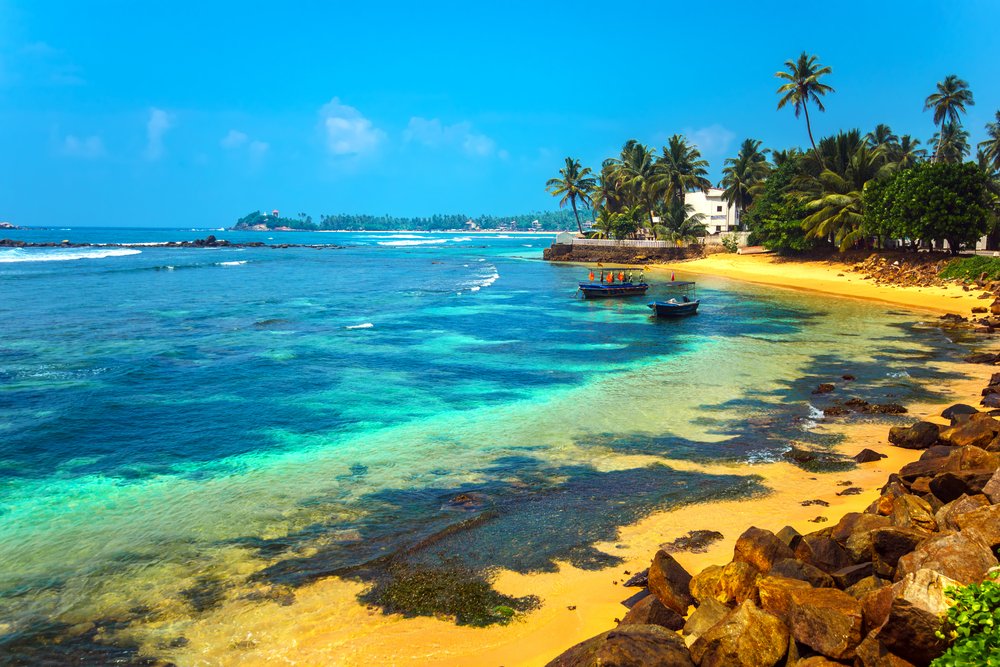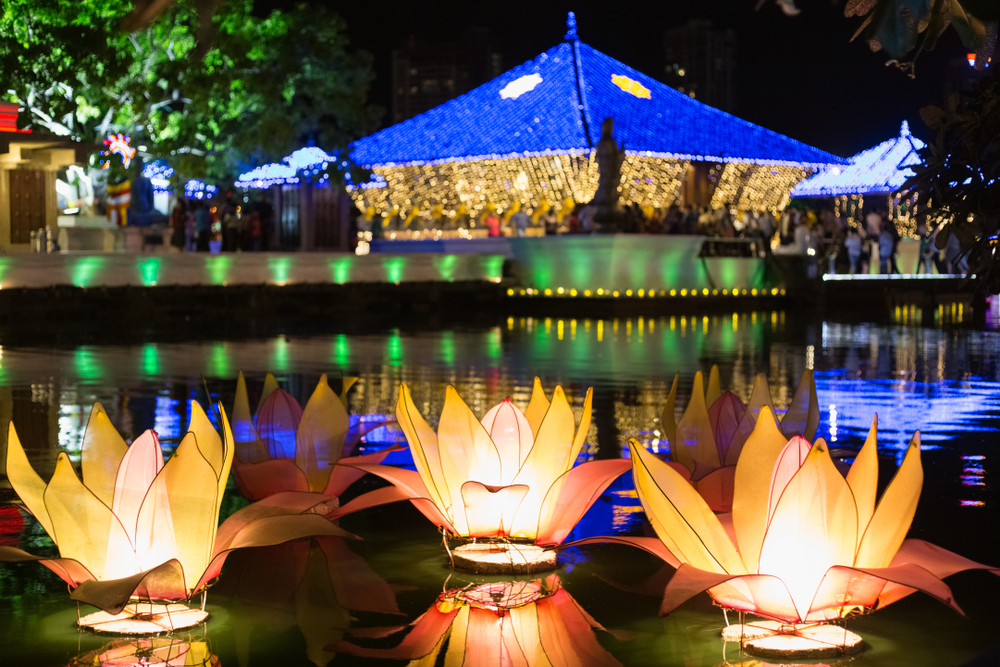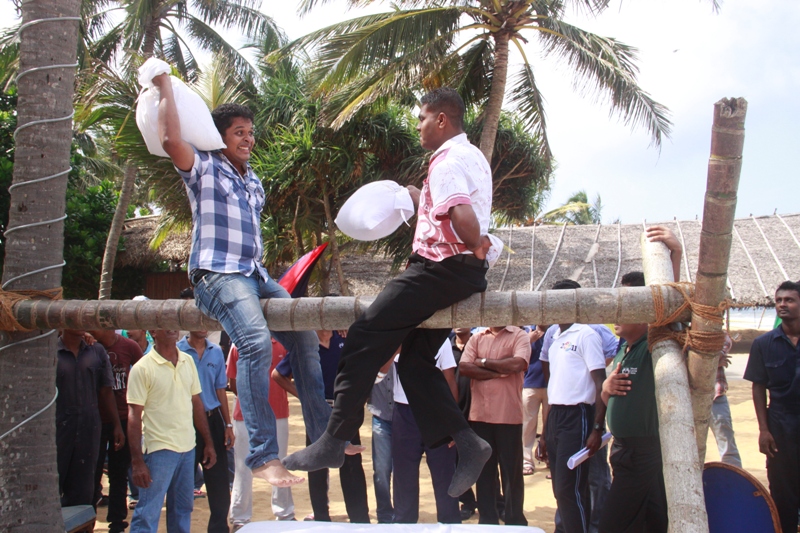If Sri Lanka has been confirmed as your next travel destination, it is very important for you to know when is the best time to visit the island paradise. As a tropical country situated near the equator, the two most noticeable seasons that Sri Lanka has are the rainy and the dry season.
Since your travel experience on the island may change drastically depending on the weather conditions, it is better to know everything about the subject matter beforehand. Some might love the dry, warm weather with a bright sun-lit day while others prefer the cooler, rainy weather. So, let’s find out when you should travel to Sri Lanka depending on the weather conditions.
When to go to Sri Lanka if you like hot & dry weather

Most tourists love the dry season as it is the perfect time to engage in outdoor activities. All regions throughout Sri Lanka remain dry from December to April. The temperature in the coastal areas is closer to 27-32°C. Occasionally, it may rise well to the 30°C during the hottest times of the day. In the highlands and the tea country, the temperature ranges from 16-22°C.
These comfortable weather conditions are the reason why the tourism in Sri Lanka is at its peak from December to April. The tourist attractions will be densely occupied and it may be a little harder to get the best deals on food and accommodation as the prices tend to rise due to high demand. But overall, this is the best time to travel to Sri Lanka to experience all the wonders this island paradise offers.
When to go to Sri Lanka if you like cooler weather & smaller crowds

If you prefer cooler weather, you should check in advance where and when to go to Sri Lanka. The north-eastern regions are cooler from November to early December. The temperatures may drop from an average temperature of 30°C to 27°C.
However, if most of your travel plans rely on locations and activities involving the south-western regions of the island, you should target the months between May & September. The average temperature during these months ranges from 25-28°C.
The biggest drop in temperature from October to December occurs in the highest points of the country. The temperature in Kandy could be as low as 22°C while Nuwara-Eliya, Ella and surrounding areas could have an average temperature of 14°C.
These colder weather conditions are preferred mostly by the honeymooners and couples going for romantic getaways, and hotels offer discounted packages targeting honeymooners.
What’s best about travelling to Sri Lanka during this offseason period is that the most-known tourist attractions will be much less crowded. Somewhat empty paved streets in Galle Fort at nights is a sight to see at these times.
Dry season in Sri Lanka

Sri Lanka’s solid claim to being a year-round holiday destination is challenged by only a few countries in Asia. You just have to know where & when to travel. The main powers deciding the start and end of the seasonal changes are the two monsoon seasons and an inter-monsoonal period.
The South-Western region’s dry season falls in between December and April. You can plan your itinerary to follow the South-western hotspots during this period if you love warm weather. The beaches are perfect during this time in the South-Western regions, promising its visitors the ultimate relaxation and joy.
The North-easter region’s dry season is between May and September. This is when Sri Lanka’s peak tourism stream starts to decline. If you visit the North-East during these months, the crowds will be smaller and hyped up prices for food, accommodation and transport for the season will return to their normal rates.
Rainy Season in Sri Lanka

You will have to take the two monsoon seasons and the inter-monsoonal period once more if you prefer to visit Sri Lanka during the cooler, wet season.
The South-Western monsoon brings rain to the South-Western region in the months between May & September. Your plans to take long walks during the day may be interrupted by the sudden pouring of rain.
The rain season in the North-eastern region of Sri Lanka is caused by the north-eastern monsoon which lasts between the months of October to December. The rainfall during this period is tolerable as it will continue to rain for a few hours a day and then stop only to continue the pattern the next day.
The inter-monsoonal period dramatically introduces heavy rainfall and thunderstorms all across the country from October to the first few weeks of November. As December draws near, the dry period sets in throughout Sri Lanka which is when tourism will be at its peak.
Best times to visit Sri Lanka to see it’s festivals and popular events
Those who genuinely love different cultures would surely love to have an authentic experience during their travels. Festivals and popular events play a huge role in the spirit of a nation. So if it’s the cultural aspect of Sri Lanka you need, you have to know the right time to visit the country to be a part of the festivities.
Vesak – Festival of Lights

Vesak poya is a Buddhist celebration which commemorates the birth, the enlightenment and the death of the Lord Buddha. Vesak falls usually on the full moon night of May. The country celebrates Vesak for a full week. During Vesak, it is a common sight to see colored lanterns lit and hanged in front of shops, houses and other places. The lanterns are called “Vesak Kudu” and they depict the light of the Buddha (Lord Buddha), Dhamma (The way) and the Sangha (The clergy). In busy areas where people often pass by, large pandals called “Thorana” will be constructed. They are well lit and enormous attention is given to detail the thorana. There will be circular panels depicting the events of Lord Buddha’s life according to the Jataka stories. It’s not unusual for cities and villages at night being as bright as day with all the lanterns and pandals lit throughout the place.
Food stalls called “Dansals” will be set up by volunteers across the country providing passerby with free food, sweets, drinks or snacks. The whole country engages in alms-giving during the Vesak period. The whole festival will be a delight and refreshing to tourists fortunate enough to visit the country during Vesak.
Sinhala & Tamil New Year

Image courtesy if Mount Lavinia hotel http://news.mountlaviniahotel.com/?attachment_id=977
The Sinhala & Tamil New Year is celebrated by the Sinhala & Tamil community on the 14th of April. The celebration marks the end of the harvesting season and spring. There is a vast set of traditional rules to follow on this auspicious day, especially in the early morning. This is a happy occasion where families visit each other, the neighbours, friends and everyone in the community to revive and refresh the bonds between each other. Communities gather at grounds or other public places to play fun games and take part in contests. Often these events are organized by active youth in the community and local businesses sponsor for the prizes.
The most popular games played are “kotta pora” (Pillow fight), banis kama (Eating a bun tied to a rope while not using hands), aliyata asa thabeema (Marking the elephant’s eye while wearing a blindfold), tug of war, kanamutti bideema and many others.
These gatherings also have a fashion show type contest where they choose an Awurudu Kumariya (Roughly translates to “princess of the festival”) and Awurudy Kumaraya (Roughly translates to “prince of the festival”).
The festive spirit during the Sinhala & Tamil New Year is contagious and a very happy event to be a part of.
Poson Festival
Poson is the second most important Buddhist celebration right after Vesak. It is celebrated on the full moon day of June.
What this festival marks is the introduction of Buddhism to Sri Lanka by the Buddhist monk “Mihindu”. Just like Vesak, the celebration is islands-wide with lanterns, pandals and food stalls constructed to offer free food & drink to passerby.
Many Buddhists choose to wear modest white dresses and visit Mihintale, believed to be where the monk “Mihindu” arrived to preach Buddhism to then-king of Sri Lanka, King Devanampiyatissa.
Kandy Esala Perahera

Perhaps the most known and anticipated festival by most tourists, Esala perahera is on the full moon day of either July or August.
Esala perahera is celebrated to pay homage to one of the two remaining sacred tooth relics of Gautama Buddha. The celebration happens over a period of 10 days near the streets surrounding the temple of the tooth in Kandy. Each night, a procession will take place and different schools of traditional dance around the country will come together. A procession will consist of various dancing groups engaging in different styles of traditional Sri Lankan dances along with dozens of trained & decorated elephants.
The grand celebration is on the 10th and final night, and the festive mood of the procession will be much higher than it’s previous days. Sri Lankans from all around the country come to Kandy and wait by the side of the roads to watch the procession. This festival is a true testament to the grandeur of Sri Lankan culture and gives the viewers a glimpse of what Kandy would’ve been like during the days of kingship.
Deepavali
Deepavali , also known as the Hindu festival of lights, celebrates the defeat of Ravana by Lord Rama. Deepavali symbolizes the victory of light over darkness, good over evil, knowledge over ignorance and hope over despair. This festival is usually celebrated in the mid-October or mid-November.
Deepavali celebrations last 5 days and the last day is the most important one. Devotees light oil lamps to welcome the blessings of Lakshmi, the goddess of wealth and to banish all evil from one’s life. Devotees wear new modest clothes and offer gifts to each other.
Ramadan Festival (Eid-ul-fithr)

Image courtesy of NDTV.com . https://www.ndtv.com/photos/news/muslims-celebrate-eid-across-the-world-15693
Muslims consider the month of Ramadan as a time of fasting & cleansing. The beginning and the end of Ramadan will both be marked by the sighting of the full moon. The Ramadan festival marks the end of Ramadan. Muslims worldwide celebrate Ramadan by fasting and giving. The festival day starts with Muslims gathering to a commonplace and offering their special festival prayers which are usually followed by a sermon emphasizing the importance of family, community, patience and purity. Afterwards, Muslims greet each other as this is a great opportunity to meet everyone in the community at the same place.
The Ramadan festival is celebrated on the 1st of Shawwal according to the Islamic calendar.
Cheapest time to visit Sri Lanka
Sri Lankan tourism reaches it’s peak during the months from December to April. During this time, hotels, food and transportation could cost you twice the amount you would pay on an off-season day. It is recommended that you wait out these months if you are a budget traveller.
Due to inter-monsoonal rains, all regions across Sri Lanka will be affected by cold weather conditions and occasional rainfall from October to November. This is the best time to visit Sri Lanka as all hyped prices will return to normal and you may even get free upgrades depending on the situation.
Best time to avoid large crowds when visiting Sri Lanka

The highest influx of tourists is received during the months from December to April. It goes without saying that tourist attractions will be densely packed during these months. Travelling between cities will be frustrating too due to traffic jams and fully packed trains & buses. If you like your beaches empty and relaxing, you should visit Sri Lanka during the offseason to make sure your time in Sri Lanka is spent well.
